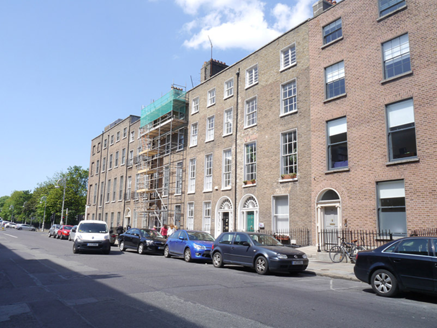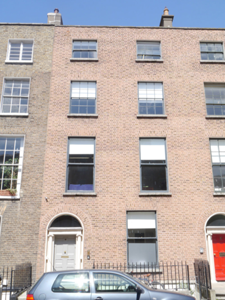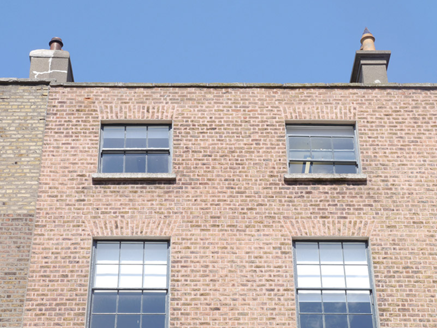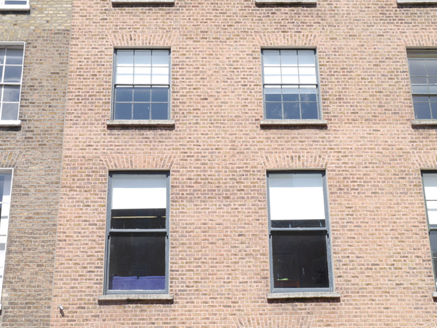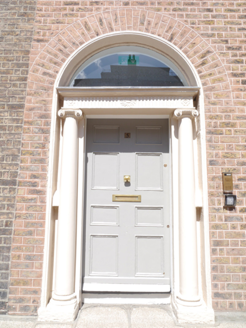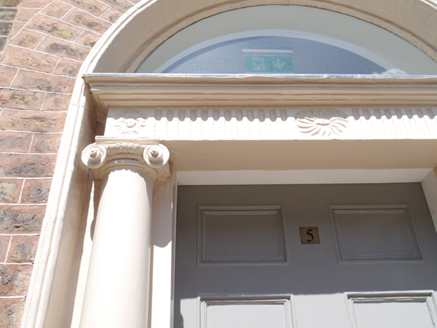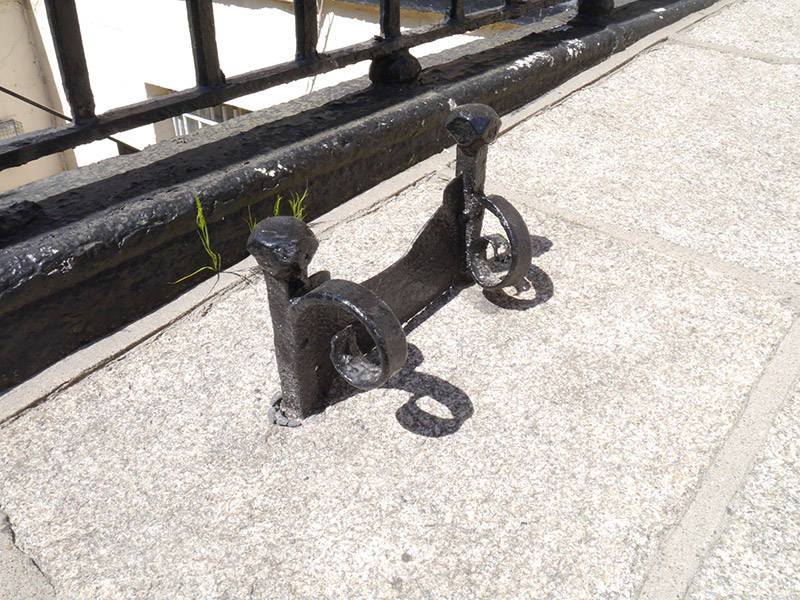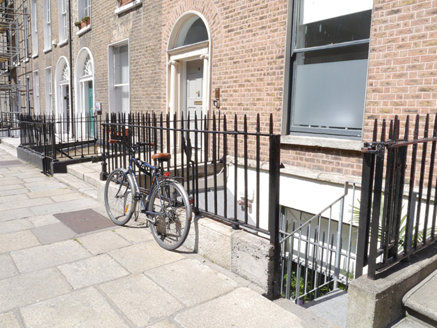Survey Data
Reg No
50100541
Rating
Regional
Categories of Special Interest
Architectural, Artistic
Original Use
House
In Use As
Office
Date
1800 - 1820
Coordinates
316835, 233382
Date Recorded
31/05/2016
Date Updated
--/--/--
Description
Attached two-bay four-storey former house over basement, built c. 1810 as one of pair with No. 6, and having single-storey pitched roof return to rear. Now in office use. M-Profile pitched slate roof, hipped to west end of rear span, with rendered chimneystacks to party walls, and roof concealed by brick parapet with granite coping. Wigged red brick walling laid in Flemish bond on granite plinth course over painted rendered basement walling; rendered walling to rear. Square-headed window openings, diminishing in height to upper floors, with masonry sills, rendered reveals and brick voussoirs. Timber sliding sash windows, replacement one-over-one pane to ground and first floors and replacement three-over-three pane to top floor, all with ogee horns, and six-over-six pane to second floor and four-over-four pane to basement, without horns. Wrought-iron grille to basement window. Apparently timber sash windows to rear elevation. Round-headed door opening with moulded surround and painted masonry doorcase comprising Ionic columns supporting fluted entablature with rosettes, plain fanlight and eight-panel timber door. Granite entrance platform with cast-iron boot-scrape, with two granite steps to street. Basement area enclosed by wrought-iron railings on moulded granite plinth. Painted concrete steps to basement, with recent door with canopy under platform. Two-storey block to rear of plot, shared with No. 6, built 1953.
Appraisal
A late Georgian row house, built as a pair with No. 6 to its east. The front elevations in the terrace exhibit well-balanced proportions and fenestration grading typical of the period. The restrained façades are enlivened by cast-iron balconettes, intact setting features and good doorcases. This house has a fine Ionic doorcase and decorative boot-scrape. It makes a strong contribution to the cohesive character of Mount Street Upper and the wider architectural heritage of south Dublin city. The street was built 1790-1834 and the variations in the streetscape are indicative of the piecemeal nature of its construction, the north side being notably less grand than the south. The east end of the street is effectively terminated by St. Stephen's Church, creating an interesting centrepiece and terminating one of the key vistas of Georgian Dublin.
